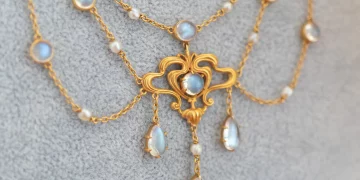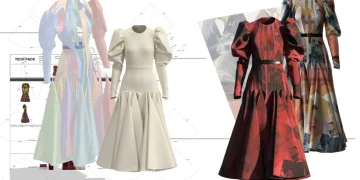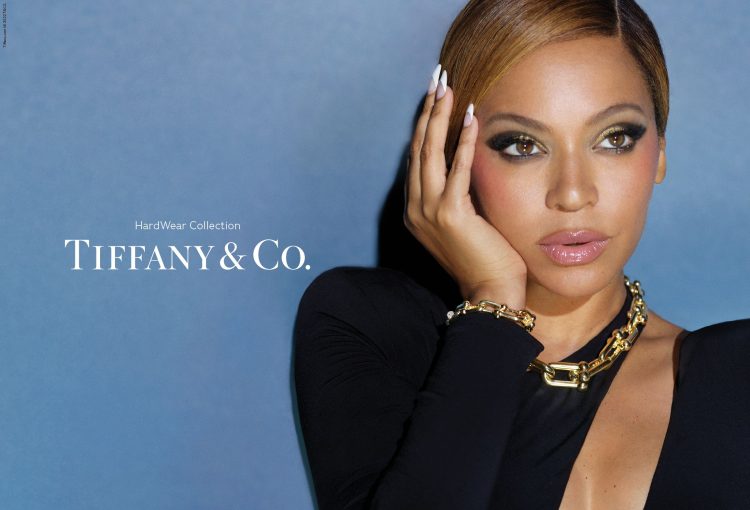Tiffany & Co. is not just a jewelry brand—it’s a symbol of elegance, sophistication, and luxury that has stood the test of time. Founded in 1837 by Charles Lewis Tiffany in New York City, the brand’s story is one of vision, innovation, and relentless pursuit of excellence. Tiffany’s journey from a modest jewelry store to one of the world’s most iconic luxury brands is not just about creating exquisite pieces of jewelry, but about shaping the very culture of luxury itself. Let’s take a closer look at how Tiffany evolved into a global luxury icon and explore the legendary story behind this remarkable brand.
1. The Beginning: Charles Lewis Tiffany and the Birth of Tiffany & Co.
In 1837, a 25-year-old Charles Lewis Tiffany and his partner John B. Young opened a small store in New York City at the corner of Broadway and Franklin Street. Originally called Tiffany, Young and Ellis, the store specialized in a wide range of luxury goods, including stationery, glassware, and watches. However, Charles Tiffany’s vision for the store was clear: he wanted to create a premium brand known for the finest jewelry in the world.
Tiffany’s breakthrough moment came in 1845 when the company started to offer its own jewelry collections, and Tiffany & Co. was born. The store’s blue box, introduced shortly after its founding, would eventually become the brand’s signature packaging, synonymous with sophistication and exclusivity.
Tiffany’s commitment to quality and craftsmanship was evident from the outset. The company quickly gained a reputation for offering beautiful, finely crafted jewelry, and soon, it would become known for setting trends rather than following them. Charles Tiffany was a man ahead of his time, determined to create an American jewelry house that rivaled the storied European brands of the day.
2. Tiffany’s Breakthrough Moment: The 1845 Blue Book Catalog and the Birth of American Luxury
In 1845, Tiffany published its first Blue Book catalog, a move that would prove pivotal in the company’s evolution. The catalog offered customers a glimpse into the luxurious world of Tiffany’s designs and introduced the idea of exclusive, high-quality jewelry being made available to a wider audience, at least those who could afford it. The Blue Book would go on to become a symbol of American luxury, rivaling the high-class catalogs of European houses like Cartier and Bulgari.
The Blue Book was a carefully curated selection of Tiffany’s finest pieces, and it solidified the company’s reputation as an innovator in the luxury jewelry space. This catalog wasn’t just about showing off jewelry; it was about telling a story of craftsmanship, creativity, and the belief that American craftsmanship could be on par with, or even surpass, that of Europe.
What made Tiffany unique during this period was its American sensibility—its commitment to quality without the old-world European aristocratic attitude. This made Tiffany & Co. especially appealing to American elites who were looking for a more democratic luxury. Tiffany represented new money—not tied to old European aristocracy—but rather a new, dynamic vision of wealth and social standing.
3. The Legacy of Design and Craftsmanship: Tiffany’s Innovations and Unique Style
While the business model of Tiffany & Co. was gaining traction, what truly set Tiffany apart in the luxury jewelry world was its relentless focus on design and craftsmanship. Tiffany was known for introducing new techniques and unique styles that were not seen in European jewelry houses. One of the company’s most significant contributions was the introduction of the Tiffany Setting in 1886.
The Tiffany Setting revolutionized the way diamonds were set into rings. Rather than the traditional prong setting, which hid the diamond’s brilliance, the Tiffany Setting raised the diamond high above the band, allowing more light to enter the stone and giving it a stunning brilliance. This innovation made Tiffany engagement rings a staple of American luxury, and to this day, the Tiffany Setting remains one of the most sought-after designs for engagement rings.
In addition to the Tiffany Setting, the company was known for its innovative approach to design. Tiffany embraced Art Nouveau, Art Deco, and even mid-century modern styles, always staying ahead of the curve in terms of fashion and aesthetics. The company also sought to work with the world’s finest gemstones, diamonds, and metals, creating pieces that would become not just accessories but works of art.
Tiffany’s impact on the world of jewelry was not just technical—it was emotional. Through its designs, Tiffany was able to translate timeless emotions—romance, elegance, and luxury—into tangible pieces of jewelry that people could cherish forever. Tiffany’s jewelry was not just about the material—it was about the experience of owning something truly extraordinary.
4. Tiffany & Co. and the Rise of American Luxury
By the late 19th and early 20th centuries, Tiffany & Co. had firmly established itself as a symbol of American luxury. In the Gilded Age, wealthy American industrialists and socialites flocked to Tiffany for its exquisite craftsmanship and innovative designs. Tiffany pieces became the ultimate status symbol among the American elite, and the brand’s iconic designs were seen on the most influential figures of the time.
During this period, Tiffany & Co. was also playing a key role in shaping American culture. In 1867, Tiffany was awarded the Grand Prize at the Paris Exposition Universelle, a prestigious international exhibition, marking the first time that an American company had received such a high honor for jewelry design. This recognition solidified Tiffany’s status as one of the world’s leading luxury brands and proved that American craftsmanship could stand shoulder to shoulder with Europe’s finest.

5. The Role of Tiffany & Co. in Pop Culture: “Breakfast at Tiffany’s” and Hollywood Glamour
While Tiffany & Co. had already become synonymous with luxury, it wasn’t until the 20th century that the brand cemented its place in pop culture—thanks, in part, to the iconic 1961 film “Breakfast at Tiffany’s”. Starring Audrey Hepburn as the charming and glamorous Holly Golightly, the film showcased Tiffany’s elegance, sophistication, and, most notably, its legendary Tiffany Blue Box.
In the movie, the scene where Hepburn stands outside Tiffany’s, gazing at the jewelry in the store’s window, became an instant cultural touchstone. The image of Holly Golightly, with her pearls and black dress, perfectly encapsulated the allure of Tiffany & Co. and helped the brand become an enduring symbol of class, beauty, and wealth.
The influence of “Breakfast at Tiffany’s” made Tiffany not just a brand—it made it part of the American Dream. The connection between Tiffany and Hollywood glamour remains strong to this day, with Tiffany pieces frequently appearing on red carpets and being worn by some of the world’s most famous stars.
6. Tiffany & Co. in the Modern Age: A New Chapter of Innovation and Sustainability
In the 21st century, Tiffany & Co. continues to build on its storied legacy. The brand’s commitment to innovation, quality, and sustainability remains at the core of its identity. With an increased focus on responsible sourcing and eco-conscious production, Tiffany is adapting to meet the needs of modern consumers who care about both luxury and ethics.
Tiffany’s commitment to sustainable practices is reflected in its use of Fairmined gold, recycled silver, and lab-grown diamonds. The company has also taken steps to improve the transparency of its supply chain, ensuring that all materials used in its creations are sourced responsibly and ethically.
Tiffany’s bold creative collaborations—such as its partnership with designer Elsa Peretti and its reimagining of iconic pieces—demonstrate that the brand continues to innovate while staying true to its heritage. The company’s forward-thinking approach ensures that it will remain at the forefront of the luxury jewelry world for generations to come.
7. Conclusion: Tiffany’s Enduring Legacy as a Symbol of Luxury
Tiffany & Co.’s legendary story is one of vision, craftsmanship, and enduring elegance. From its modest beginnings in 1837 to becoming a symbol of global luxury, Tiffany’s evolution has been shaped by a relentless pursuit of excellence, groundbreaking designs, and a commitment to both quality and ethical responsibility.
As Tiffany continues to innovate, embrace sustainability, and shape modern luxury, the brand’s legacy will undoubtedly endure. The Tiffany Blue Box remains a symbol of love, celebration, and achievement, representing the perfect union of timeless beauty and modern luxury. The story of Tiffany is far from over—it is still being written, and the world continues to watch with admiration and anticipation as this legendary brand crafts the future of luxury jewelry.

















































